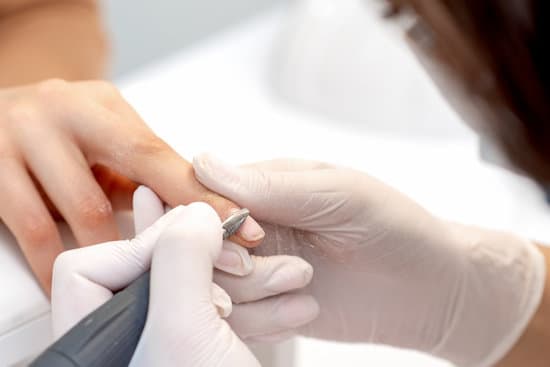Are you frustrated with a malfunctioning nail drill handpiece? Don't worry; we've got you covered! In this article, as a professional nail drill handpiece manufacturer, we will walk you through the step-by-step process of fixing your nail drill handpiece, ensuring you can finish your manicure and pedicure skills quickly. Whether you're a professional nail technician or an enthusiast, this guide will help you troubleshoot and resolve common issues with your nail drill handpiece. So, let's dive in!

The nail drill handpiece is essential for nail technicians and enthusiasts alike. It allows for precise shaping, filing, and buffing of nails, making the manicure and pedicure process faster and more efficient. However, like any other electronic device, the nail drill handpiece may encounter issues over time. In the following sections, we will discuss common problems with nail drill handpieces and provide solutions to fix them.
Before we delve into troubleshooting and fixing your nail drill handpiece, let's gain a basic understanding of its components. The handpiece consists of a motor, a collet, a chuck, and a power cord. The motor generates rotational power, which is transferred to the collet and chuck, allowing the attachment of different bits for various nail treatments.
One of the most common issues with nail drill handpieces is lack of power. If your handpiece is not turning on or operating at a significantly lower speed, there could be several reasons behind this problem.
Handpieces can overheat due to prolonged use or inadequate ventilation. Overheating may lead to reduced performance, motor damage, or even complete failure of the handpiece.
Unusual noises such as grinding, squeaking, or rattling can indicate underlying problems with the handpiece. These noises are often a result of worn-out bearings, loose components, or debris accumulation.
Bits can become jammed or stuck in the collet or chuck, making removing or replacing them challenging. This can happen due to improper installation, dirt buildup, or worn-out components.
When experiencing a lack of power, always check the power source. Ensure the handpiece is plugged in and the power outlet is functioning correctly. Additionally, examine the power cord for any signs of damage or fraying. If the power source is not the issue, proceed to the next steps.
Regular cleaning and maintenance are vital for the optimal performance of your nail drill handpiece. Start by disconnecting the handpiece from the power source and removing any attached bits. Use a soft cloth or a brush to remove dust, debris, or nail particles from the exterior. Follow the manufacturer's instructions regarding disassembly and cleaning techniques for more thorough cleaning.
If your handpiece is still malfunctioning after cleaning, you may need to replace worn-out parts. This could include the motor, bearings, or the power cord. Consult the user manual or contact the manufacturer for guidance on finding and replacing the necessary components.
Proper lubrication is essential for the smooth and efficient operation of the handpiece. Apply a small amount of handpiece oil or lubricant to the designated areas, as instructed by the manufacturer. Be cautious not to use too much oil, as excessive lubrication can attract dirt and cause further problems.
When troubleshooting or repairing your nail drill handpiece, always prioritize safety. Ensure the handpiece is disconnected from the power source before performing any maintenance or repairs. If you are uncertain about any aspect of the repair process, seek assistance from a professional or contact the manufacturer for guidance.
In conclusion, a malfunctioning nail drill handpiece doesn't have to halt your nail care routine. Following the troubleshooting steps outlined in this article, you can identify and fix common problems with your handpiece. Remember to maintain your handpiece regularly and practice proper safety precautions. With a little effort and care, you can restore your nail drill handpiece's functionality and continue creating stunning manicures and pedicures.
Ans: It is recommended to use the handpiece oil or lubricant recommended by the manufacturer. Different handpieces may require specific types of lubricants for optimal performance.
Ans: It is advisable to clean your nail drill handpiece after each use to prevent debris buildup and maintain its performance. Additionally, perform a more thorough cleaning and maintenance routine periodically, as instructed by the manufacturer.
Ans: While some minor issues can be resolved by following the troubleshooting steps, it is best to consult a professional or contact the manufacturer for complex repairs. Attempting to repair the handpiece without proper knowledge and expertise may cause further damage.
Ans: Handpiece overheating can occur due to prolonged use without giving the motor sufficient rest periods. It can also result from inadequate ventilation or a malfunctioning cooling system. Refer to the manufacturer's guidelines on operating times and cooling requirements.
Ans: The lifespan of a nail drill handpiece can vary depending on factors such as usage frequency, maintenance, and the quality of the handpiece. With proper care and maintenance, a high-quality handpiece can last several years.
This comprehensive guide has provided valuable insights into troubleshooting and fixing common issues with nail drill handpieces. By following the outlined steps and practicing regular maintenance, you can ensure your handpiece's optimal performance and longevity. Remember to prioritize safety and seek professional assistance when necessary. Happy nail care adventures!